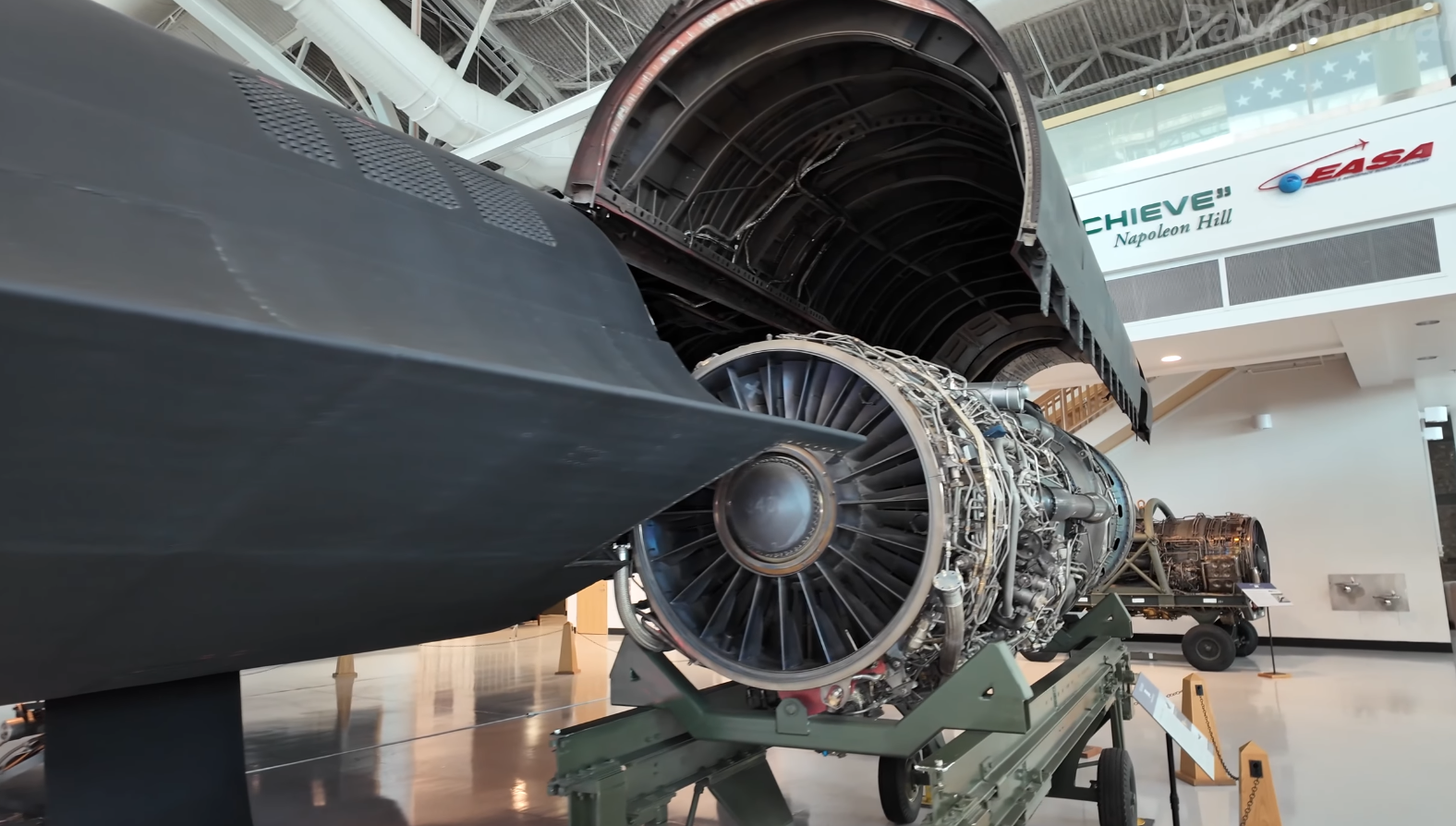The Lockheed SR-71 Blackbird remains at or near the top of the list of all-time greatest vehicles. It operated north of 80,000 feet, hit a speed greater than Mach 3.5, and could beat the Concorde from New York to London by about an hour. Albeit with a few fewer people on board. Regardless, the SR-71 remains a legendary machine, from the time the contract was signed to build them in 1962, to its official final flight in 1999, and on to the engineering beauty of the static examples still on display.
If you’ve ever been curious to get a closer look at one, I found this excellent walk-around video on YouTube. The person behind the camera is granted permission to sit in both the pilot and RSO seats, while also capturing a handful of detail shots of the Blackbird’s inner workings.
There’s a great look at the mighty Pratt & Whitney J58 turbojet engines. These actually became more fuel efficient the faster the plane flew. That’s because the engines began to act like ramjets instead of turbofans during supersonic cruising. The fuel required to power this beast is JP-7, which requires high temperatures to ignite.
So triethylborane, or TEB, was tossed into the engines first. This chemical ignites on contact with air and is the reason for the green color of the flames visible during the startup of the aircraft.
That’s just a few tidbits about an aircraft where almost every part is fascinating. From its construction to its capability. The video above provides a unique and wonderful glimpse at the Blackbird. If you’re a fan of the plane, you should give it a watch.

